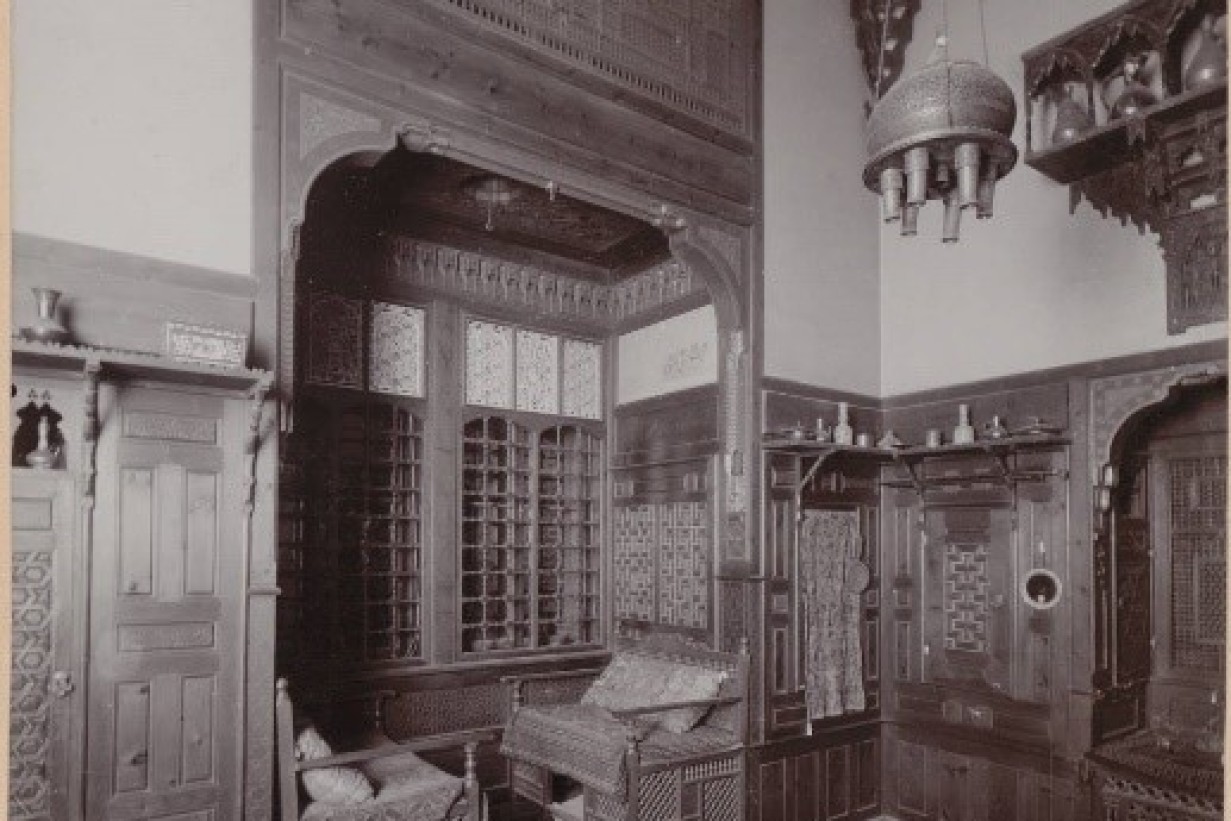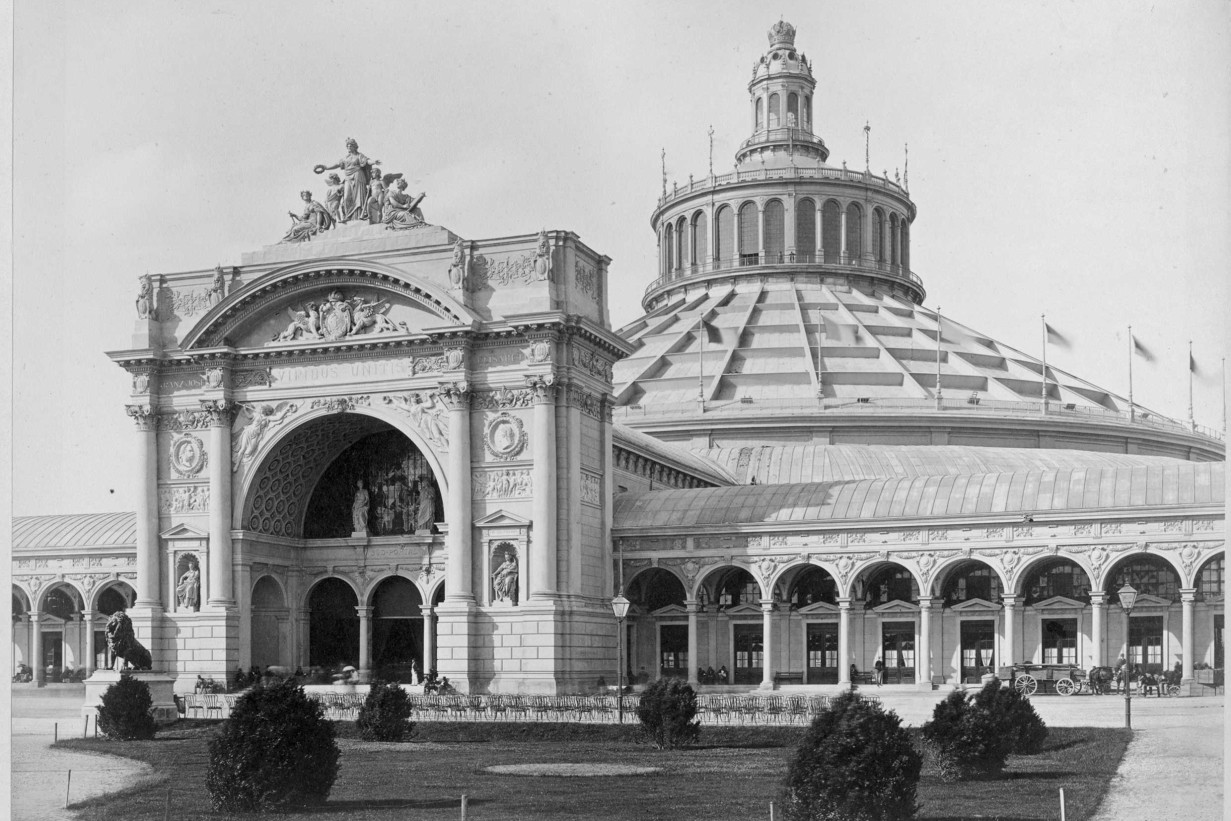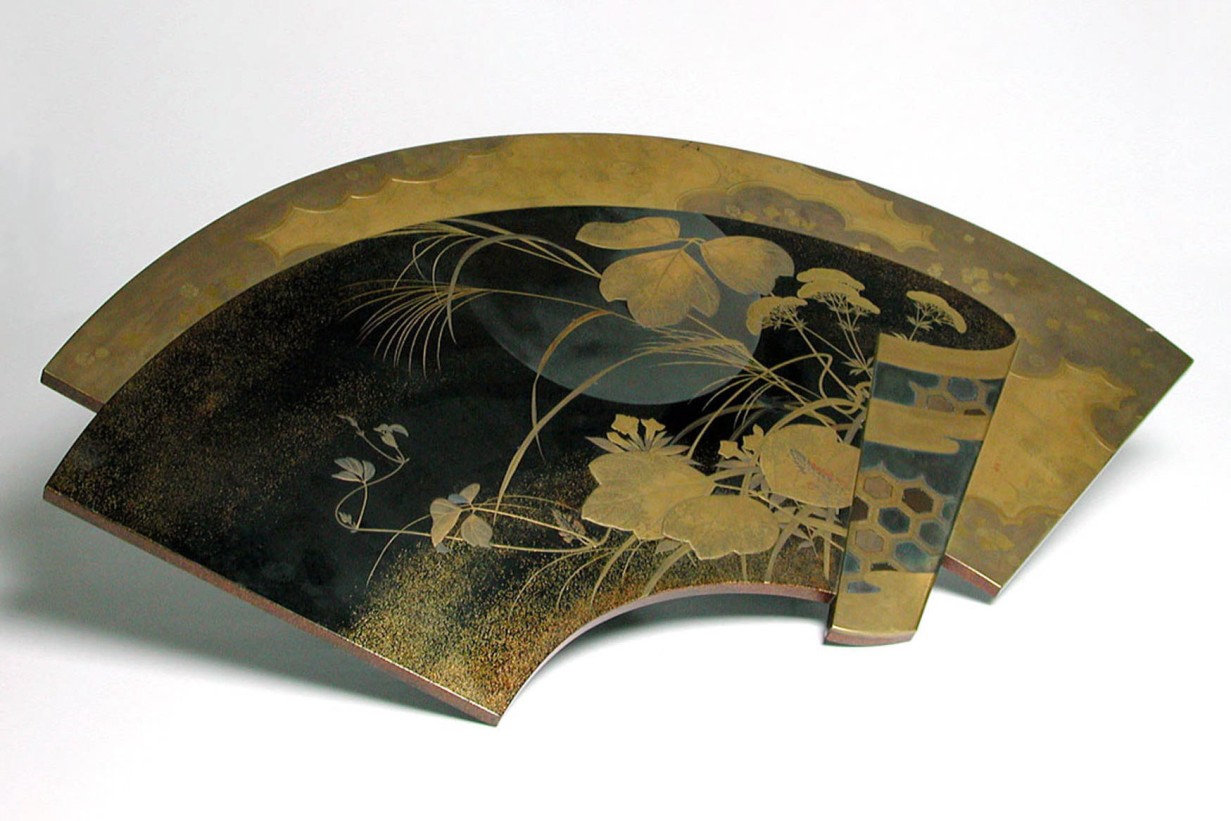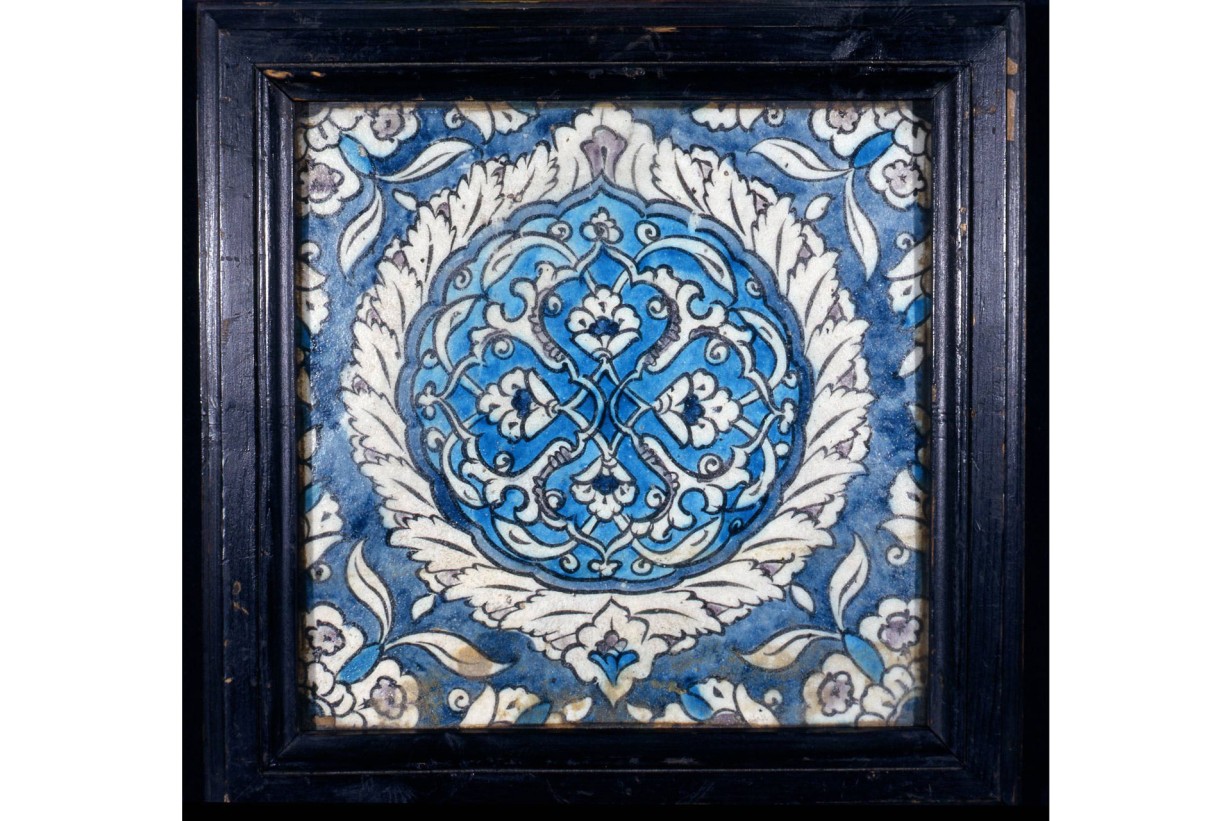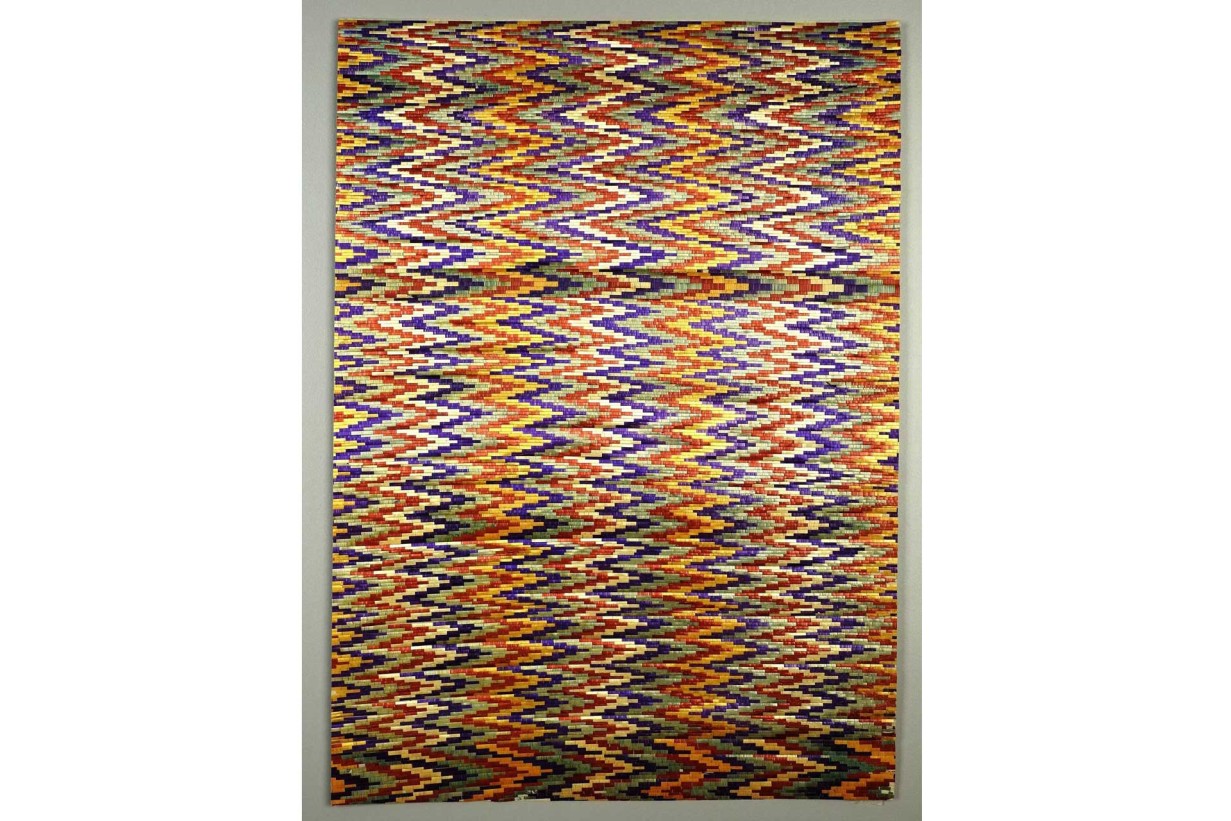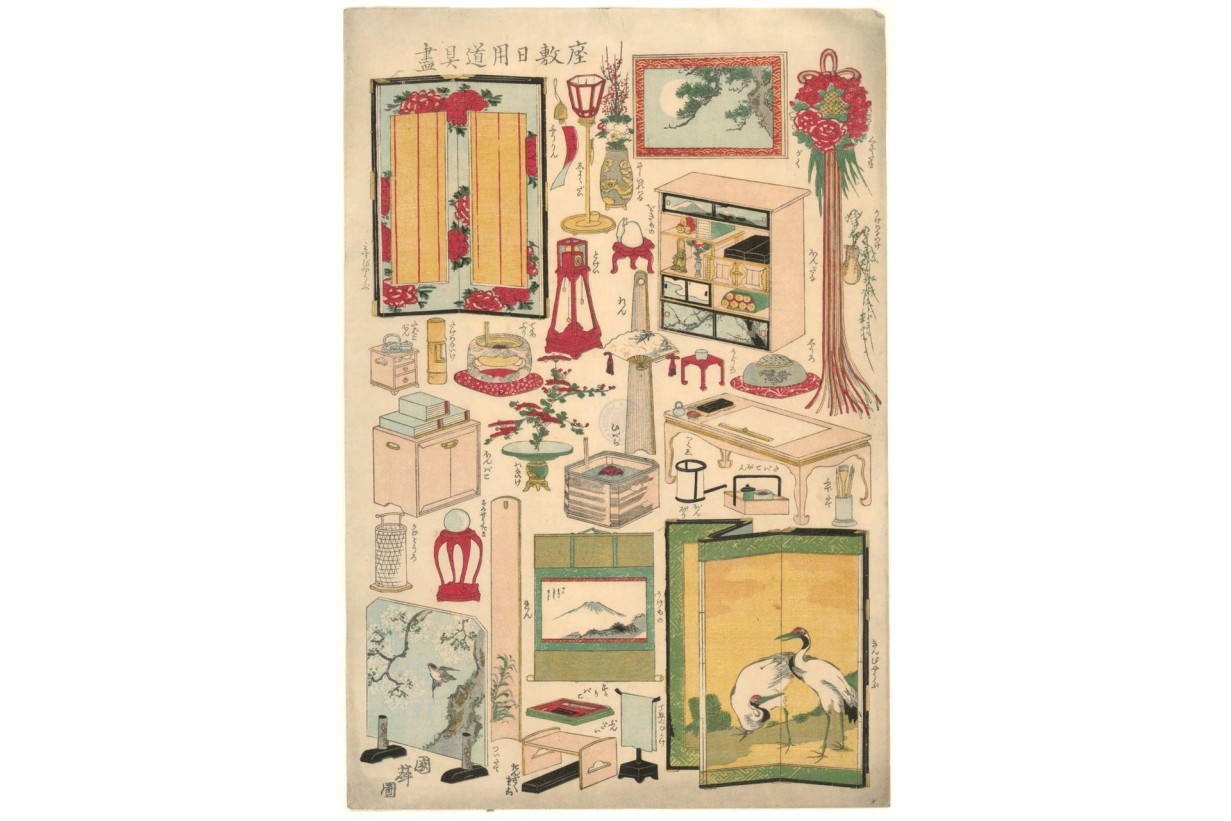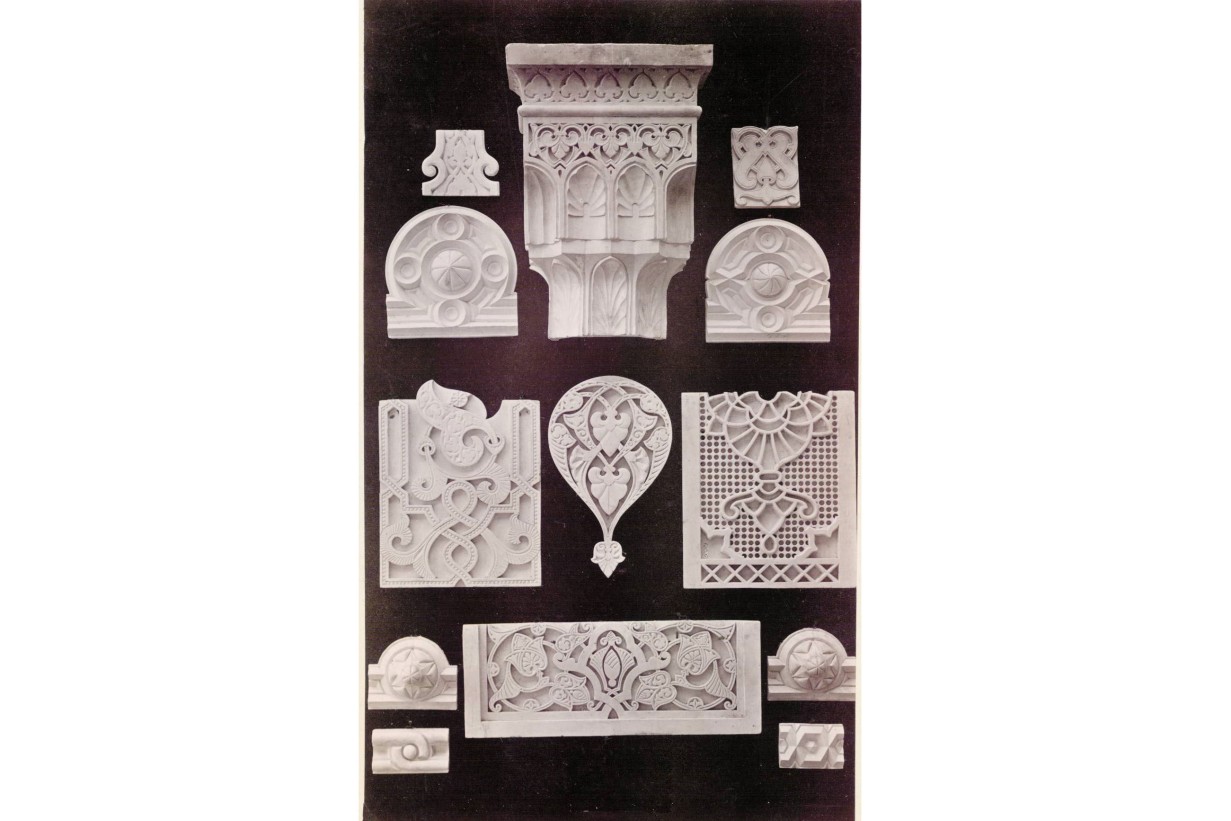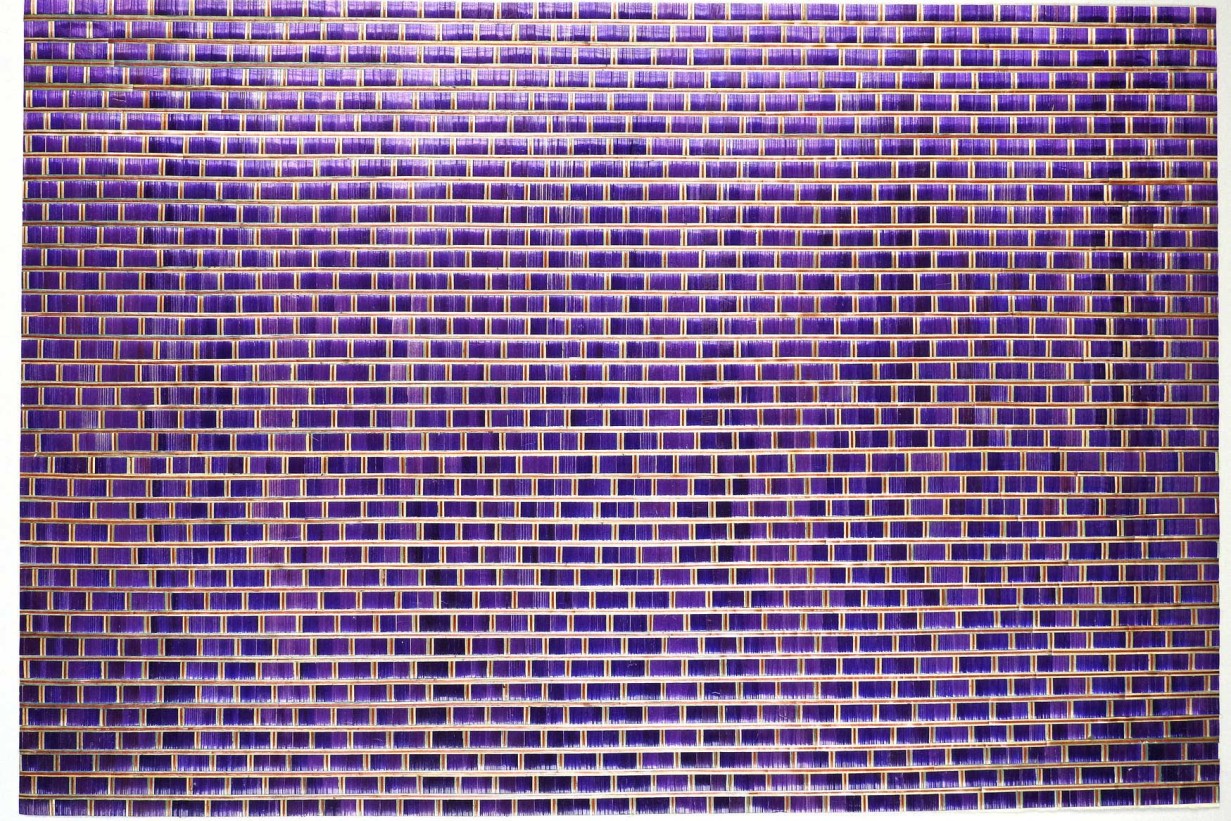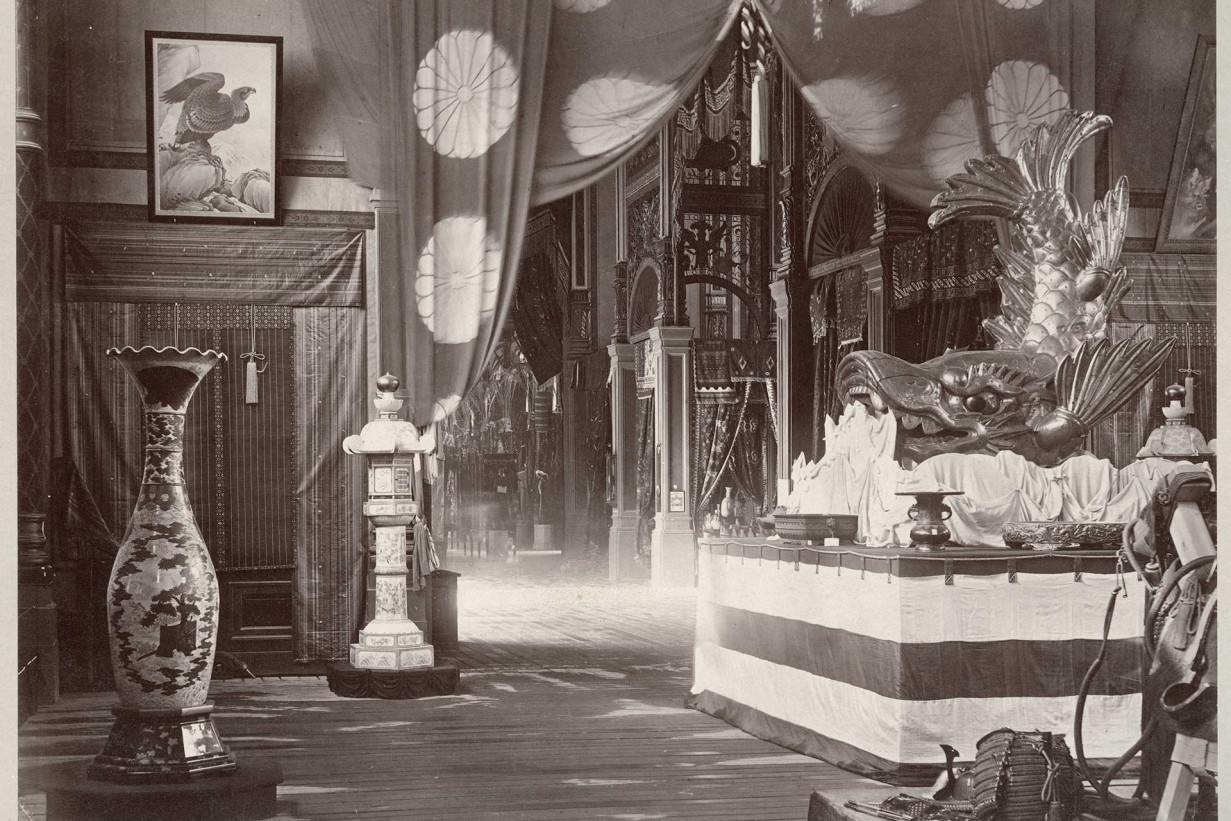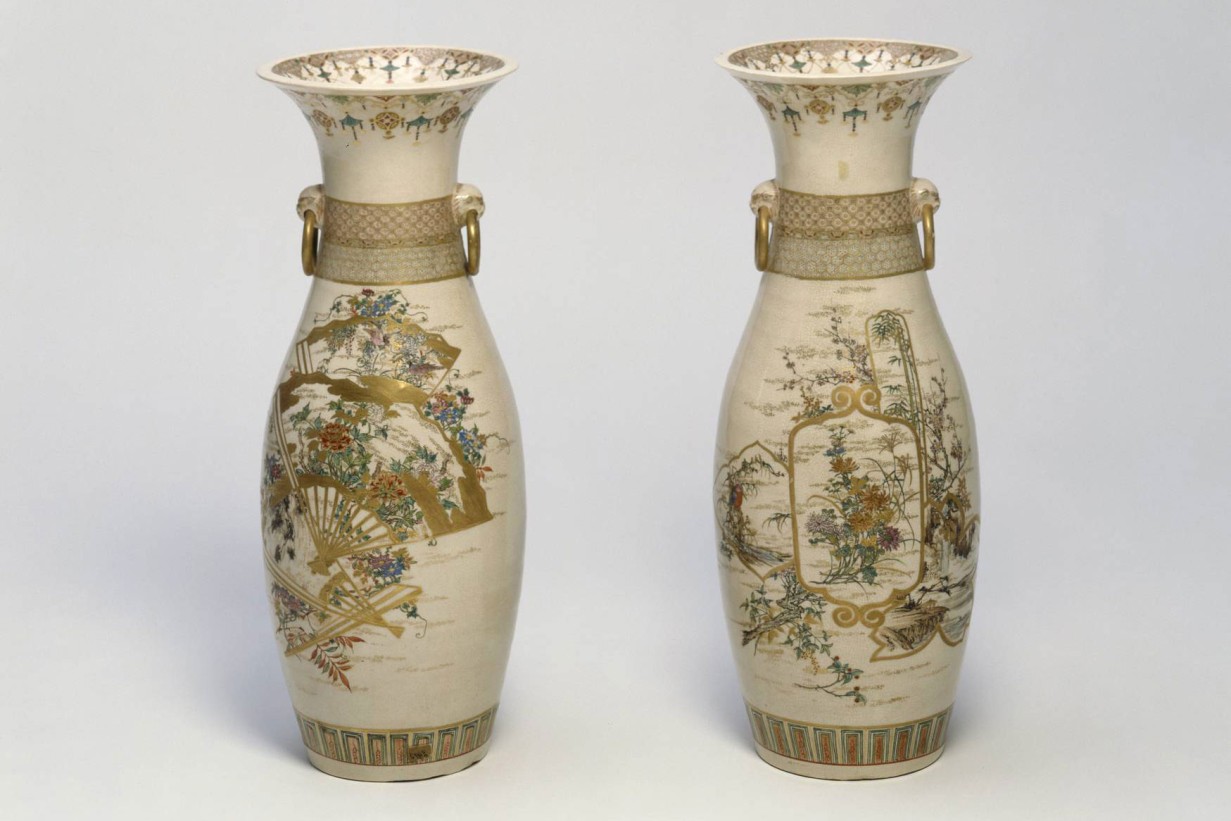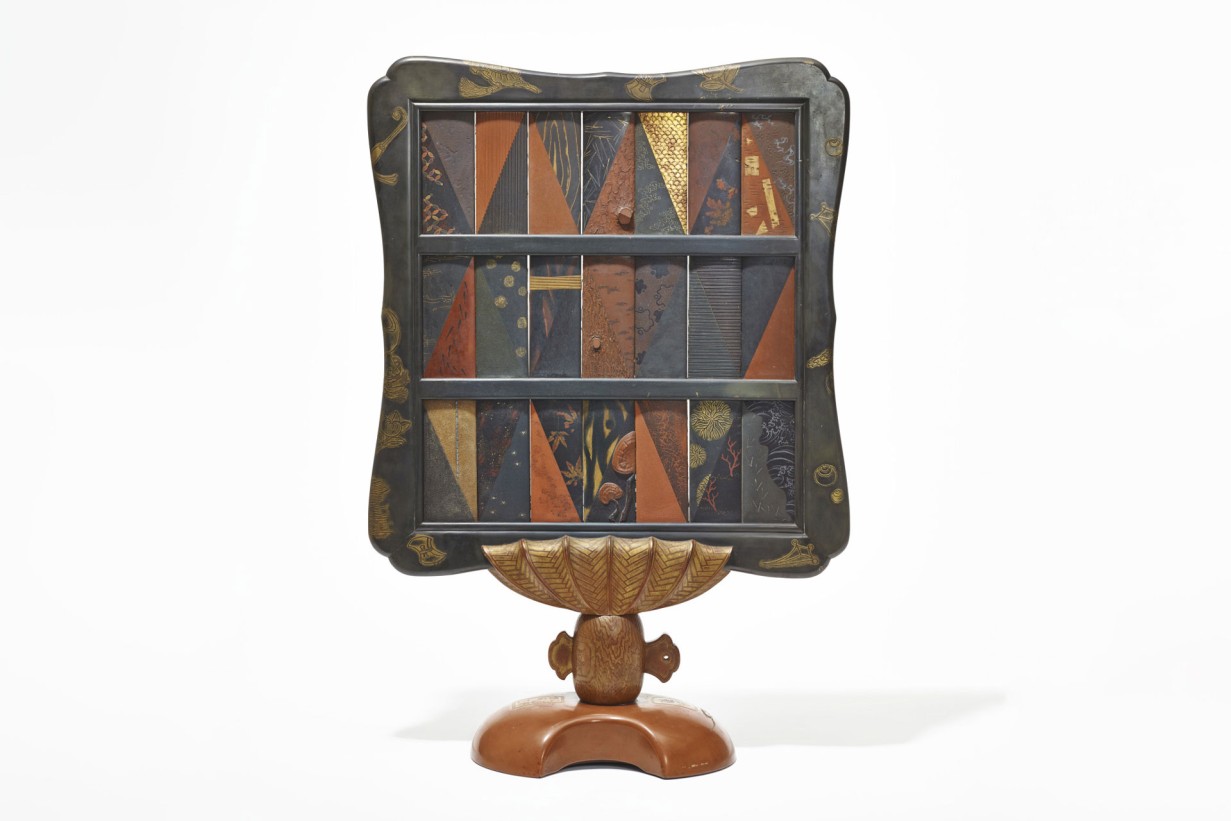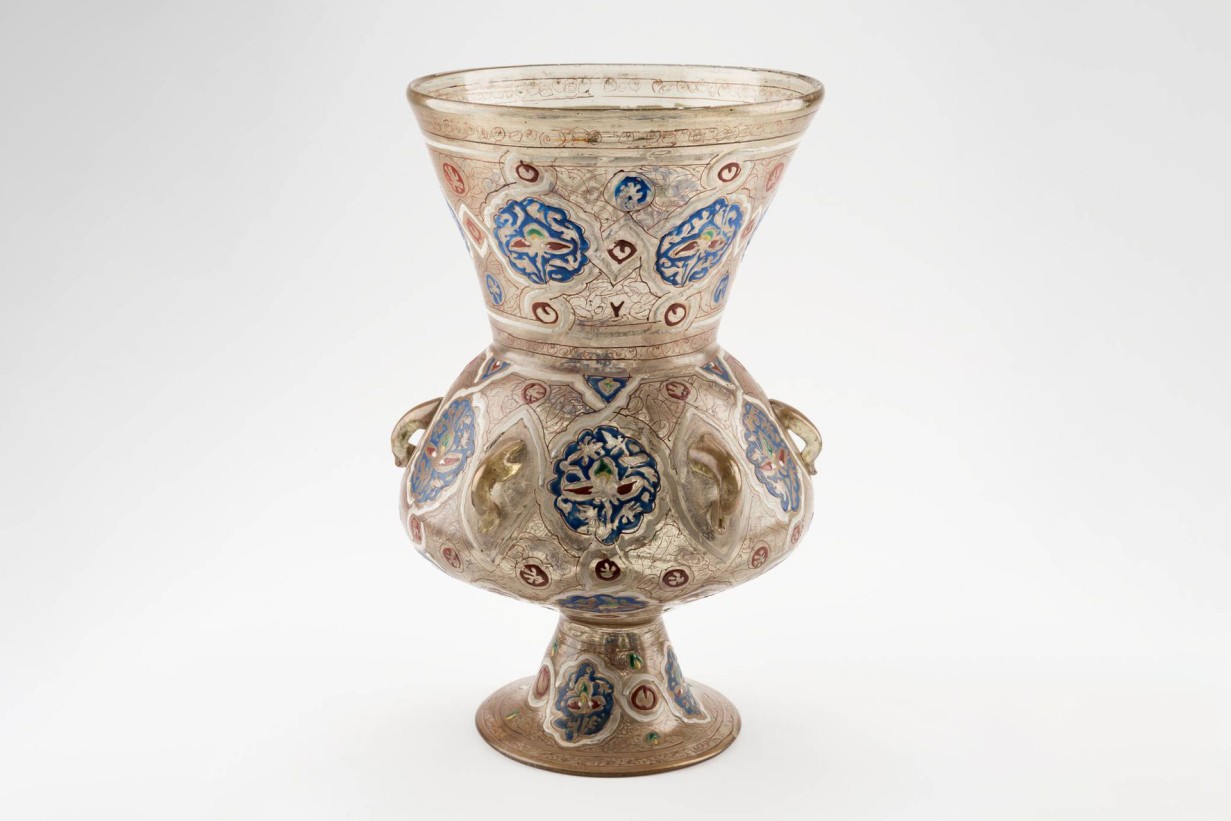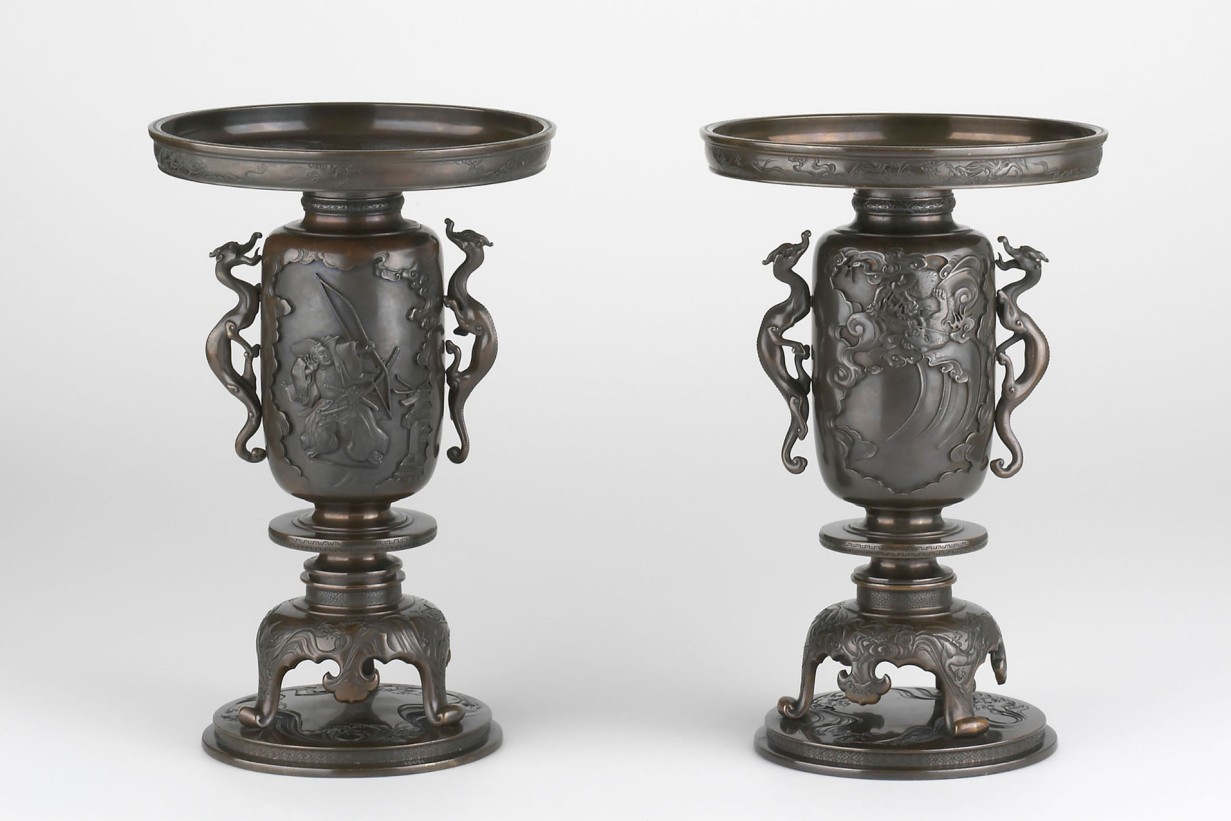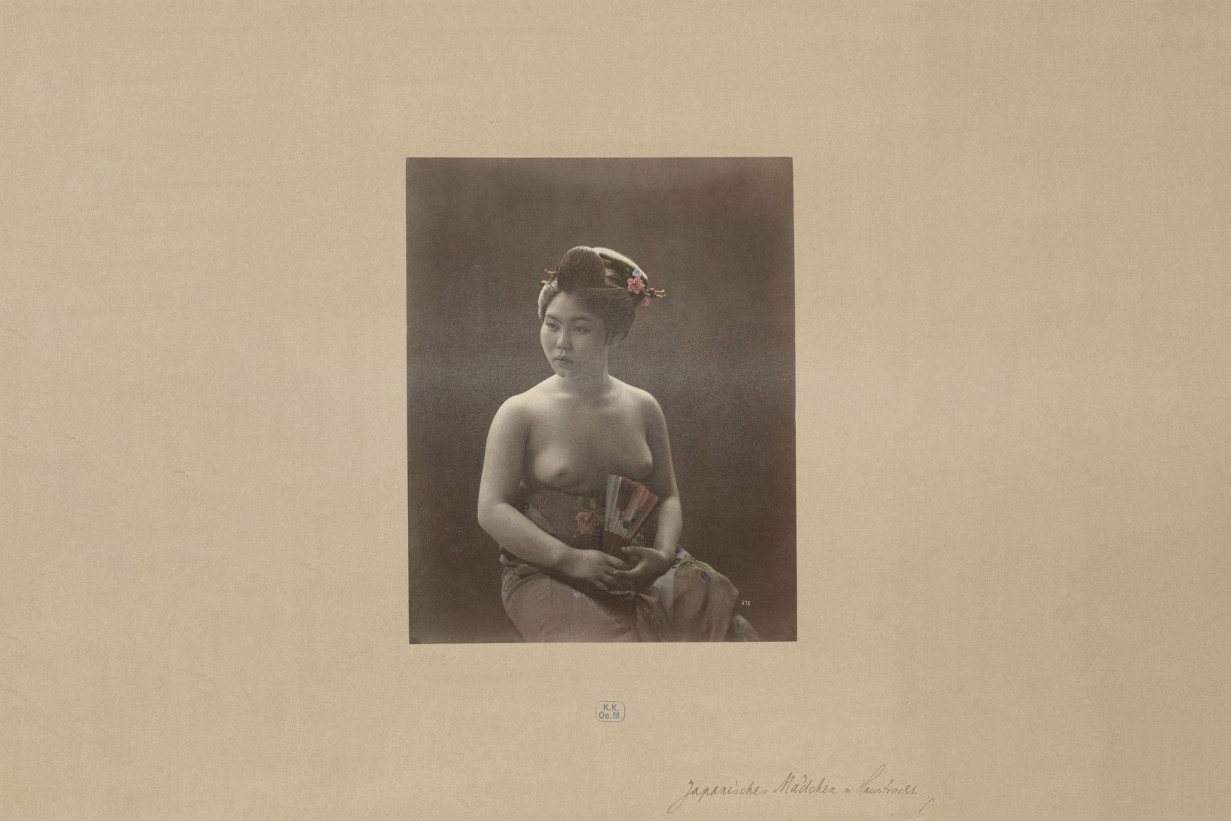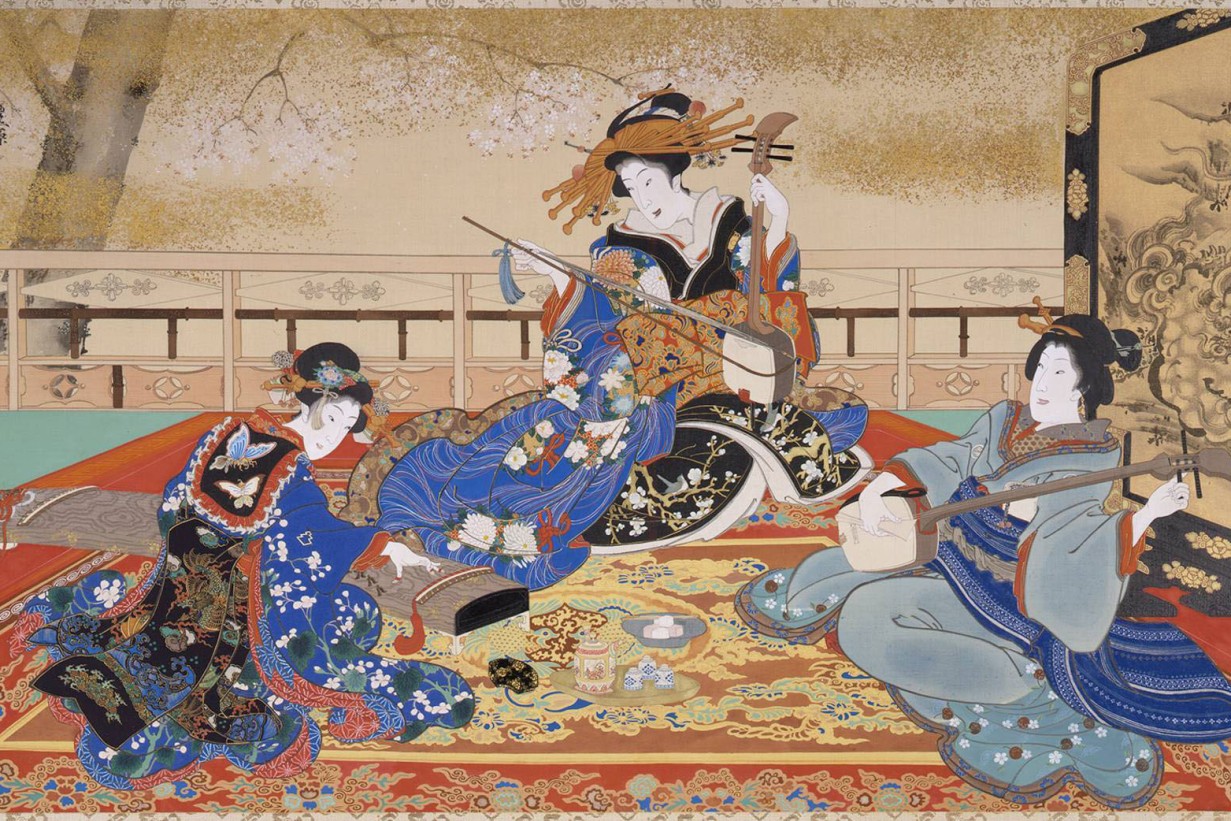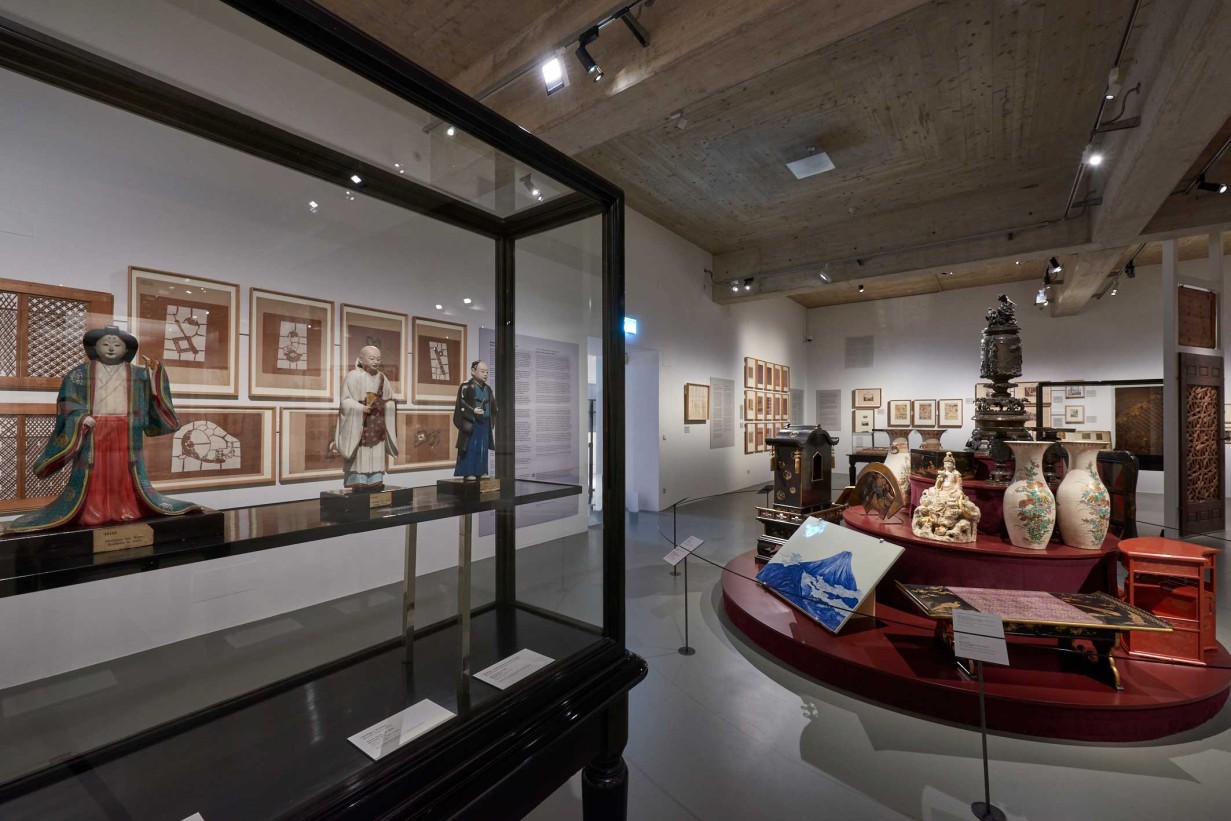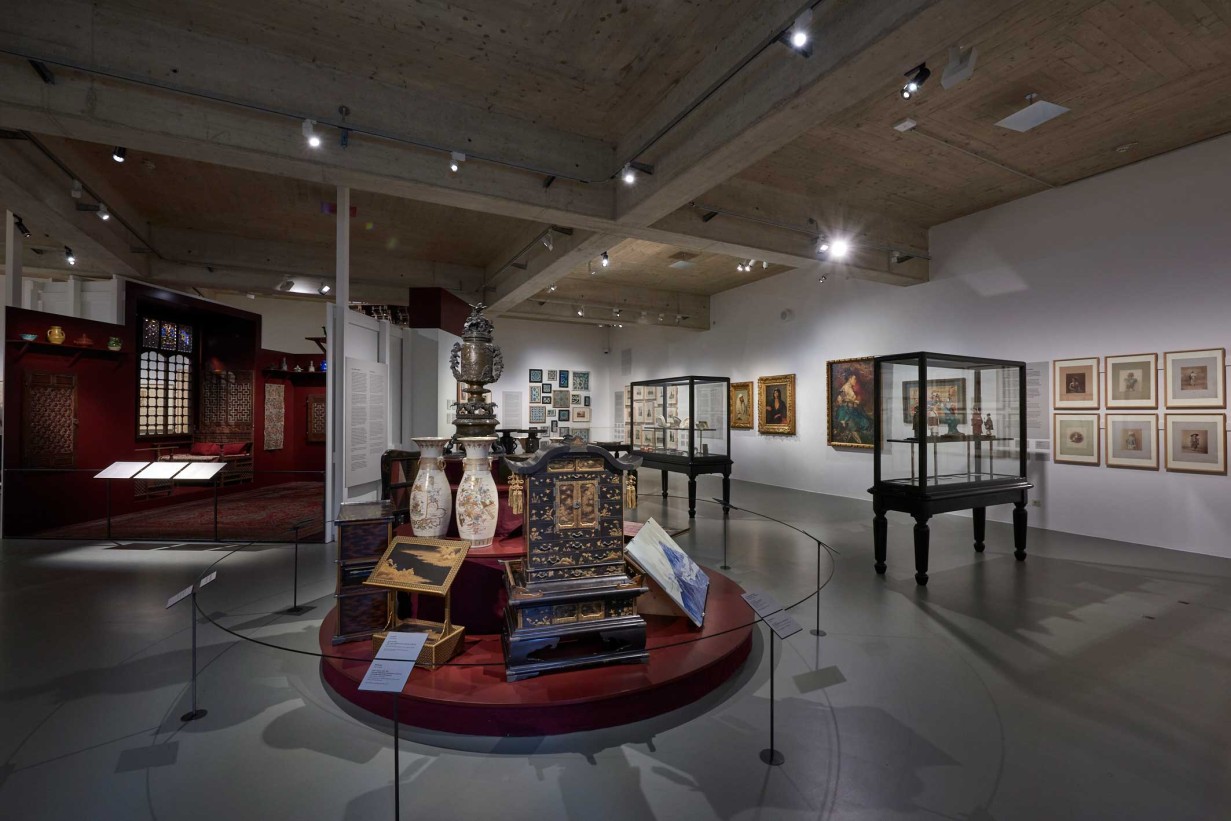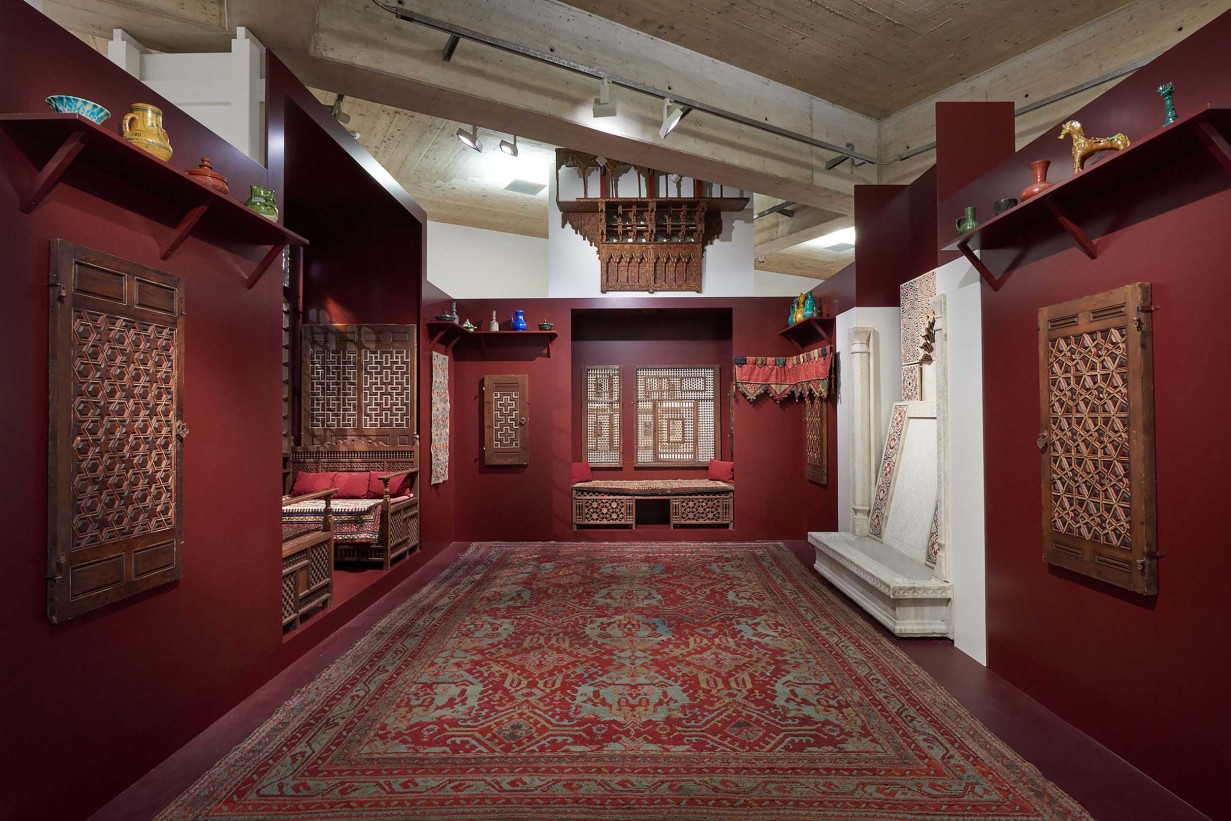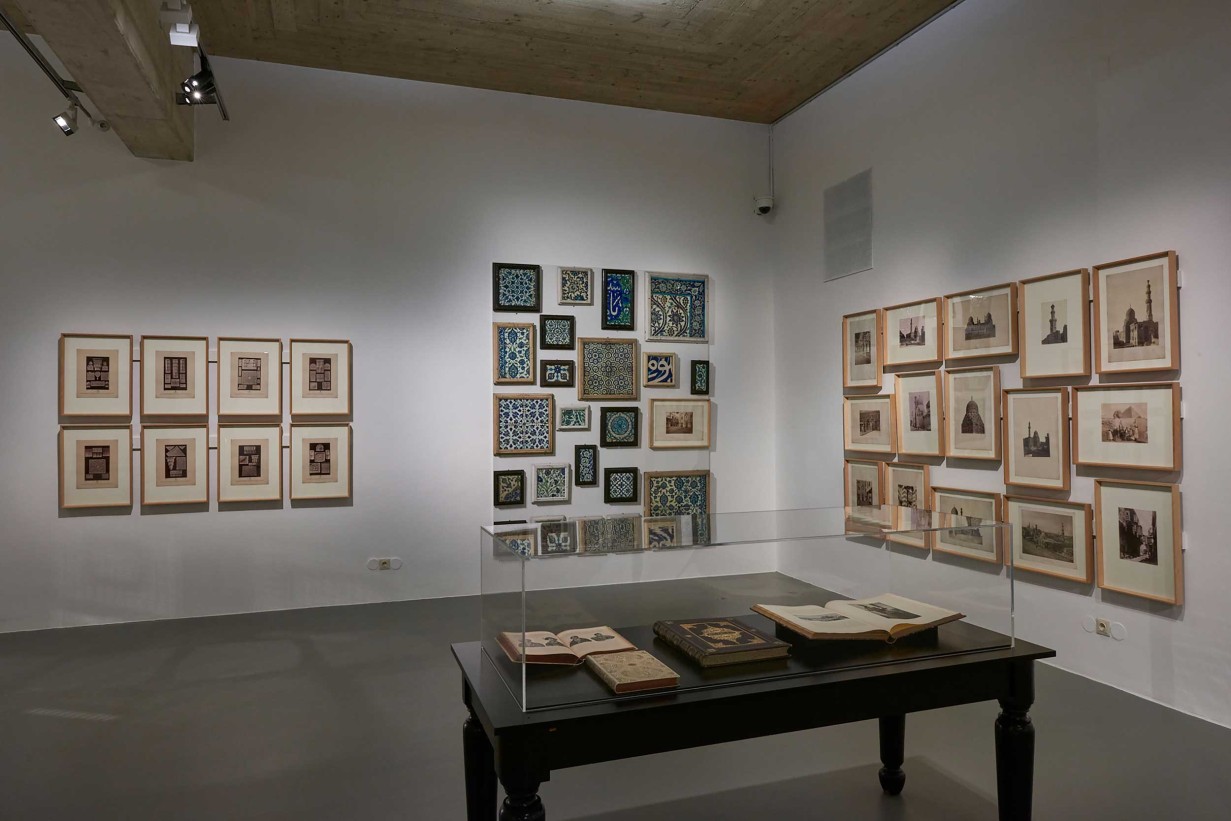Egyptian building group and Japanese garden, [Viennese Photographers Association], Vienna, 1873 © MAK
View of the Rotunda of the 1873 Vienna World’s Fair © MAK
IKEDA Taishin, Wall decoration in the form of a fan, Japan, before 1872, black lacquer with scattered gold decor © MAK/Georg Mayer
Collection of everyday guest room items, Japan, before 1872, colored woodblock print © MAK
Straw marquetry, Japan, before 1872 © MAK
View of the Japanese Gallery at the 1873 Vienna World’s Fair © MAK
Two vases, ceramic, Satsuma ware, Japan, before 1872 © MAK/Georg Mayer
HASHIMOTO Ichizō I, Lacquer pattern as folding screen in fan form, Japan, before 1872 © MAK/Georg Mayer
Mosque lamp, 1379, Syria or Egypt, enamel painting on gilded glass © MAK/Katrin Wißkirchen
YOKOYAMA Takashige, Vase, 1872, bronze © MAK/Katrin Wißkirchen
Raimund von Stillfried, Portrait of a Japanese girl, 1863–1883, albumen silver print, hand-colored © MAK
TOYOHARA Kunichika, Three courtesans playing music, Japan, before 1872, ink and color painting on silk © MAK/Georg Mayer
MAK Exhibition View, 2023, THE 1873 VIENNA WORLD’S FAIR REVISITED. Egypt and Japan as Europe’s “Orient” © MAK/Georg Mayer
MAK Exhibition View, 2023, THE 1873 VIENNA WORLD’S FAIR REVISITED. Egypt and Japan as Europe’s “Orient” © MAK/Georg Mayer
MAK Exhibition View, 2023, THE 1873 VIENNA WORLD’S FAIR REVISITED. Egypt and Japan as Europe’s “Orient” © MAK/Georg Mayer
MAK Exhibition View, 2023, Franz Schmoranz, Arab Room in the Austrian Museum of Art and Industry, today’s MAK (reconstruction) © MAK/Georg Mayer
MAK Exhibition View, 2023, Franz Schmoranz, Arab Room in the Austrian Museum of Art and Industry, today’s MAK (reconstruction) © MAK/Georg Mayer
MAK Exhibition View, 2023, THE 1873 VIENNA WORLD’S FAIR REVISITED. Egypt and Japan as Europe’s “Orient” © MAK/Georg Mayer
